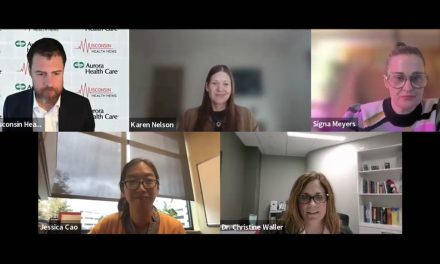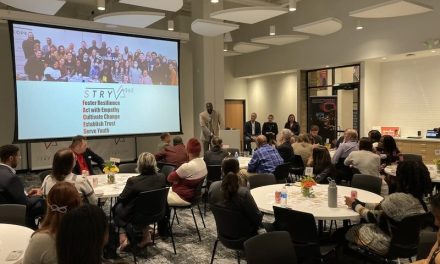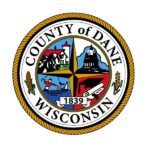
Providers look for long-term funding in wake of COVID-19

More than 1,000 clinics, nursing homes and other providers are currently working through applications for around $110 million in federal funding provided by the state to help with expenses and lost revenue caused by COVID-19, the state health department said Monday.
Providers say they appreciate the funding, but they’re looking for additional support in the future to weather the pandemic over the long term.
The Department of Health Services began accepting applications from healthcare providers on June 5.
Under the agency’s plan, $100 million will head to emergency medical services providers and long-term care facilities.
The other $10 million will go to rural health clinics, federally qualified health centers, tribal health clinics and free and low-cost clinics.
The money will help address COVID-19-related expenses and losses incurred in March, April and May. It can help cover lost revenue, additional staffing costs and the purchase of personal protective equipment and other supplies.
Payments will be calculated by adding together lost revenue and expenses and subtracting provider relief fund payments under the Coronavirus Aid, Relief, and Economic Security Act and other payments, government loans or business continuation payments that offset COVID-19 revenue losses or expenses.
The applicant will then receive the lesser of either their losses and expenses or the maximum initial payment, which varies by provider type. The maximum is $41,860 for a nursing home with more than 100 beds.
The application period runs until June 30. Once the initial payments have been sent out, there’ll be a second round of payments from leftover funding heading to providers with the greatest needs.
DHS spokeswoman Jennifer Miller said that they’re working to get funding out as fast as possible.
“The department will pay out funding as the applications come in and will continue to evaluate the needs of providers related to COVID-19 throughout the year,” Miller said in an email.
Associations representing providers appreciate the funding, but say more is needed.
“The reality of the situation for Wisconsin nursing homes is that this is a marathon and not a sprint,” said John Vander Meer, Wisconsin Health Care Association and Wisconsin Center for Assisted Living CEO.
He called the funding an “important step in the right direction.” But he said they want to ensure that the challenges long-term care facilities are facing will be addressed past the next 60 days or so.
LeadingAge Wisconsin CEO John Sauer said the first round of funding will be appreciated by those that were left out by other funding allocations from the federal government. Sauer said that the program looks at expenses and losses from earlier this year.
“The impact of COVID-19 and a poor Medicaid reimbursement system is going to carry with facilities beyond this initial three-month period,” he said. “We’re hoping that the allocation methodology could be modified in the second go around to help facilities pay their bills at least through the end of the calendar year because no one knows what’s in store for long-term care facilities.”
Thanks to the federal government in the short term, some facilities are “hanging in there now, but the real concern will be weeks and months down the road,” Sauer said.
Wisconsin Assisted Living Association CEO Michael Pochowski said the funding “represents only a fraction of the increased costs assisted living has and will continue to incur until a vaccine is readily available.”
“In short, more financial help is needed,” he said, referring to increased costs due to obtaining personal protective equipment, infection control and staffing.
Home and community-based services are set to receive a maximum of $5,725 in the initial funding round. Lisa Davidson, CEO of the Disability Service Provider Network, called that a “good start,” but noted the losses incurred by the average member of the network due to the pandemic are more than $140,000 per month.
Davidson noted that their providers serve a population that is almost entirely funded through Medicaid programs like Family Care, which she said provides inadequate and antiquated reimbursement.
“While we appreciate the provider relief funding, it does not come close to making whole those providers,” Davidson said. They’re asking that the second round of funding help “ensure the fragile network of providers can continue their important work,” she said.
Community health centers, as well as rural health clinics and tribal health clinics, are set to see up to $38,010 per clinic. The Wisconsin Primary Health Care Association said the funding parameters are helpful.
“At the same time, what it will take to ensure the long-term sustainability of health centers is still unknown,” they said.
Dennis Skrajewski, executive director for the Wisconsin Association of Free & Charitable Clinics, said “every little bit helps.” Free and low-cost clinics can receive up to $2,500 through the program.
Their concern is what could be a significant increase in the state’s uninsured population and a boost in people using free clinics during the summer and late fall.
“It hasn’t hit a peak yet because people are still afraid to go to the doctor, but I think as that slows down, we’re going to start seeing a wave,” he said. “We have the potential to get overwhelmed a bit and we’re hopeful that there will be additional funding and additional support at that point and time.”
Wisconsin Health News is removing the password on all stories related to the coronavirus. For the latest developments follow us on Twitter at @wihealthnews or check out our website. For complete healthcare coverage, sign up for a free trial to our daily email newsletter.





